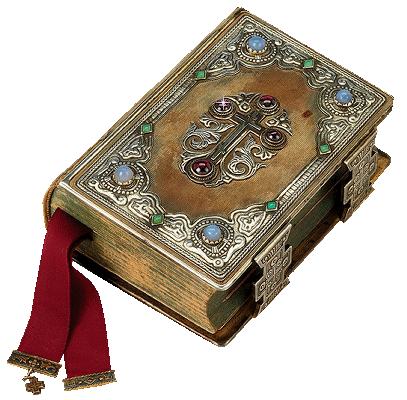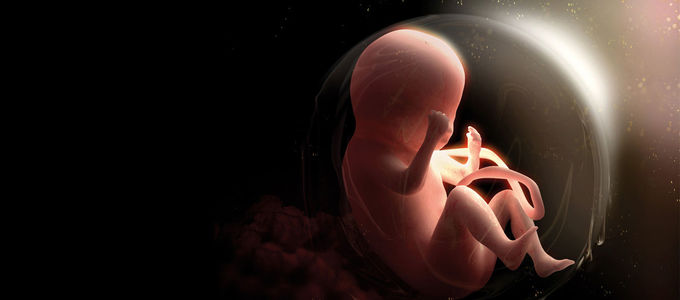The point in Time that the soul was created and when it was joined
to the body is a chapter that has puzzled and will continue to
puzzle mankind. On this
specific matter we do not have a God-given revelation (that is, a
dogma); only theological opinions and theories.
1. The time that the soul was created – per the Old Testament
- and
the views of the Fathers
Beginning with the Holy Bible and specifically the chapter that
narrates the creation of man (Gen.1:26): “Let us make man
according to
our image and according to our likeness”, we immediately notice there is
no reference here to body and soul separately.
By basing ourselves on this verse, it is possible to reach a
safe
conclusion that in the specific narration, the dual composition of
man (1)
is
highlighted, as a psychosomatic entity. Therefore we have a
simultaneous creation of body and soul.
Further along, (Gen.2:7) reference is again made to the creation of
man, except with more detail: “And God fashioned man from the
dust of the earth and He blew into his countenance the breath of
life, and man became a living soul”.
At first glance, it seems as though man’s body was created
first and the soul afterwards.
But in actual fact, these were not two, separate energies of
God, because that would be demoting the soul as something inferior
to the body, because it was supposedly made “after”.
As such, the “fashioning” and the “blowing” are two,
simultaneous energies of God. (2)
With the teaching of Saint Gregory of Nyssa in mind – and
specifically his work regarding the making of man – we note that he
also analyzes the aforementioned verse, stating that soul and body
come into existence simultaneously, because if the one of the two
components preceded the other, it would demote the Creator’s power
as deficient, inasmuch as He would appear as unable to create the
two elements - body and soul – simultaneously.
In the Old Testament we encounter another verse – which we had
mentioned earlier – when interpreting the 2nd Canon of
Basil the Great. It is
Exodus 21:22-25, by which it is easy for us to be led to erroneous
conclusions.
“22 Now if two men fight and strike a pregnant woman and her child
comes forth not fully formed, he shall be punished with a fine.
Accordingly as the husband of the woman might impose, he shall pay
with judicial assessment. 23 But if it is fully formed, he shall pay
life for life, 24 eye for eye, tooth for tooth, hand for hand, foot
for foot, 25 burn for burn, wound for wound, stripe for stripe.”
According to this excerpt, the unborn child is referred to as “not
fully formed” and “fully formed”.
By means of a simplistic reasoning, we could say that the “fully
formed” child has a soul, and the “not fully
formed” child does not. But
even thus, we are again led into an impasse, since we can’t
determine the time of the soul’s creation.
This view was supported by Tertullian and Augustine – but was
not accepted by Basil the Great in his 2nd Canon.
2. The theories regarding the creation of the soul throughout the
ages
As mentioned in our introductory note, we do not have a dogma
pertaining to the creation of the soul, but various opinions and
theories. Those theories are as follows:
a) Theory regarding the pre-existence of souls.
According to this theory – which had been embraced by Plato, Philo,
Origen and others – souls had been created before all the ages, but
for reasons of their moral decay, they were somehow imprisoned in a
body.
This theory of pre-existence of souls collapsed with the teaching of
Gregory of Nyssa, and was validated by the 5th Ecumenical
Synod, in the cadre of its condemnation of Origen’s cacodoxies.
b) Theory regarding the creation of souls.
According to this theory, souls are created immediately by God,
during the conception of man. It is difficult to accept this theory,
because it presumes that God continues to be Creator, whereas the
Holy Bible says that “He ceased from all His works, on the
seventh day”.
Another significant problem in accepting this theory is that God
perpetuates the Original Sin in mankind – a theory that is
encountered mainly among Westerners and is in fact accepted by the
Roman Catholic “church”, because it favours their dogma of
“immaculate conception” by the Theotokos.
One of the major adherents of this theory was also Pope Pius
XII.
c) Theory regarding the “transplanting” of souls.
According to this theory, souls are “sown” into
the offspring - based
on inherited succession, but also with God’s blessings – in
accordance with the words in Genesis “increase and multiply”.
This is the predominant theory to this day, which is also
accepted by Saint Gregory of Nyssa. (3)
Notes
1)
On the dual composition of man, see the work by N.Mitsopoulos
“Themes of Orthodox Dogmatic Theology”, University Lectures on
Dogmatics, Athens 2012, pp.180-182.
2)
As above, pp.183-184.
3) As
above, pp.189-191.
Translation : Ê.Í.


